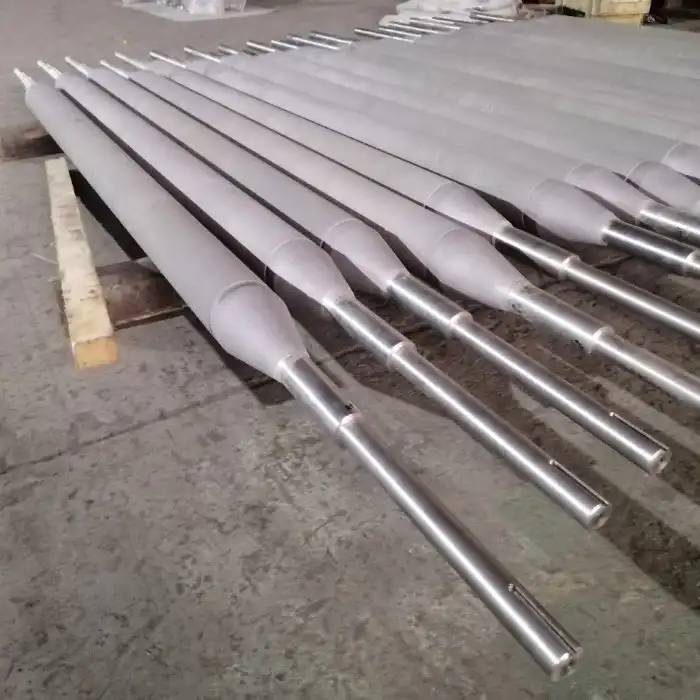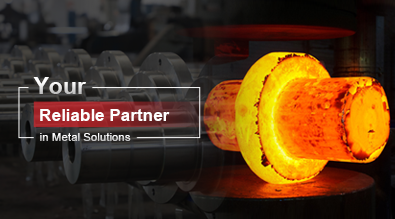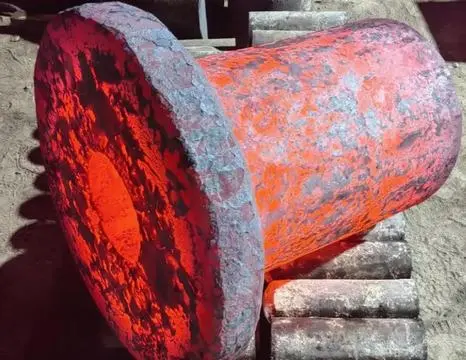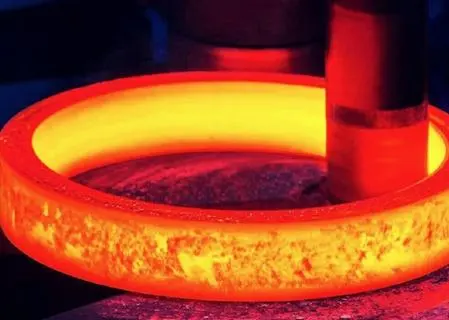Key Factors in Selecting Materials for Furnace Rolls
Temperature Resistance and Thermal Stability
One of the primary considerations when choosing materials for furnace rolls is their ability to withstand high temperatures without degradation. The selected materials must maintain their structural integrity and mechanical properties at elevated temperatures, often exceeding 1000°C (1832°F) in some applications. Heat-resistant alloys such as AISI 310, Inconel 601, and RA330 are popular choices due to their excellent thermal stability and resistance to creep at high temperatures. These alloys contain high percentages of chromium and nickel, which form protective oxide layers on the surface, preventing further oxidation and extending the lifespan of the furnace rolls.
Mechanical Strength and Durability
Furnace rolls must possess sufficient mechanical strength to support the weight of the materials being processed and withstand the stresses induced by thermal cycling. Materials with high yield strength and creep resistance at elevated temperatures are essential for maintaining the dimensional stability of the rolls throughout their service life. Nickel-based superalloys like Inconel 718 and Hastelloy X offer superior mechanical properties at high temperatures, making them suitable for demanding furnace roll applications. These alloys retain their strength and resist deformation even under prolonged exposure to extreme heat, ensuring reliable performance in industrial furnaces.
Corrosion and Oxidation Resistance
The harsh environment inside industrial furnaces can lead to rapid corrosion and oxidation of furnace rolls if not properly addressed. Materials selected for furnace roll manufacturing must exhibit excellent resistance to these degradation mechanisms to maintain their integrity and performance over time. Austenitic stainless steels, such as AISI 304 and AISI 316, offer good corrosion resistance in many furnace applications. For more severe environments, specialized alloys like Inconel 625 and Hastelloy C-276 provide superior resistance to both high-temperature corrosion and oxidation, thanks to their carefully balanced composition of alloying elements.
Advanced Materials for High-Performance Furnace Rolls
Ceramic Composites and Refractory Materials
In recent years, ceramic composites and advanced refractory materials have gained popularity for manufacturing furnace rolls in extreme temperature applications. Materials such as silicon carbide (SiC), alumina (Al2O3), and zirconia (ZrO2) offer exceptional heat resistance, low thermal expansion, and excellent wear resistance. These ceramic-based materials can withstand temperatures well above 1500°C (2732°F) while maintaining their mechanical properties. Ceramic composite furnace rolls are particularly advantageous in applications where traditional metallic alloys may fail due to excessive temperatures or aggressive chemical environments.
Powder Metallurgy and Advanced Alloys
Powder metallurgy techniques have enabled the development of advanced alloys with superior properties for furnace roll applications. These materials, often referred to as oxide dispersion strengthened (ODS) alloys, incorporate fine dispersions of stable oxide particles within a metallic matrix. The result is a material with enhanced high-temperature strength, creep resistance, and oxidation resistance compared to conventional alloys. Examples of ODS alloys used in furnace roll manufacturing include MA956 and PM2000, which can operate at temperatures approaching 1300°C (2372°F) while maintaining excellent mechanical properties.
Functionally Graded Materials (FGMs)
Functionally graded materials represent an innovative approach to furnace roll design, combining the benefits of different materials in a single component. By gradually varying the composition or microstructure of the material from the core to the surface, FGMs can provide an optimal balance of properties throughout the furnace roll. For example, a furnace roll may have a tough, heat-resistant core made of a nickel-based superalloy, with a gradually increasing concentration of ceramic particles towards the surface to enhance wear and oxidation resistance. This approach allows for customized material solutions that address the specific challenges of different furnace environments.
Manufacturing Processes and Quality Control for Durable Furnace Rolls
Precision Casting and Forging Techniques
The manufacturing process plays a crucial role in producing durable furnace rolls. Precision casting techniques, such as centrifugal casting, are commonly employed to create furnace rolls with uniform microstructures and minimal defects. This process allows for the production of hollow rolls with complex internal geometries, optimizing heat transfer and reducing overall weight. For solid rolls or those requiring enhanced mechanical properties, forging techniques can be utilized to improve the material's grain structure and mechanical strength. Advanced heat treatment processes, including solution annealing and age hardening, are often applied to further enhance the material's properties and ensure optimal performance in high-temperature environments.
Surface Treatments and Coatings
To further improve the durability and performance of furnace rolls, various surface treatments and coatings can be applied. Thermal spray coatings, such as plasma-sprayed ceramic or metallic layers, can significantly enhance the roll's resistance to wear, oxidation, and corrosion. These coatings act as a protective barrier, extending the service life of the furnace roll and reducing maintenance requirements. Additionally, surface hardening techniques like nitriding or carburizing can be employed to improve the wear resistance of metallic furnace rolls, particularly in areas subject to high mechanical stress or abrasive conditions.
Quality Control and Testing Procedures
Ensuring the quality and reliability of furnace rolls requires rigorous testing and quality control procedures throughout the manufacturing process. Non-destructive testing methods, such as ultrasonic inspection and radiography, are employed to detect any internal defects or inconsistencies in the material. Mechanical testing, including tensile and creep tests at elevated temperatures, is conducted to verify the material's properties and performance under simulated operating conditions. Additionally, chemical composition analysis and microstructural examination are performed to ensure compliance with material specifications and identify any potential issues that could affect the furnace roll's durability or performance in service.
In conclusion, the selection of materials for manufacturing durable furnace rolls requires careful consideration of various factors, including temperature resistance, mechanical properties, and corrosion resistance. Advanced alloys, ceramic composites, and innovative material solutions like functionally graded materials offer superior performance in high-temperature industrial environments. By combining appropriate material selection with advanced manufacturing techniques and rigorous quality control, it is possible to produce furnace rolls that deliver exceptional durability and reliability in demanding furnace applications. For more information on high-quality furnace rolls and custom metal parts for industrial applications, please contact us at info@welongpost.com.
References
- High-temperature Alloys - Haynes International. (2024, October 9). Haynes International.
- Introduction and Features of Furnace Roll - EB Castworld. (2024, December 9). EB Castworld.
- A Comprehensive Review on Hot Deformation Behavior of High-Entropy Alloys. (2025, February 8). Journal of Materials Science.
- Multi-objective topological design considering functionally graded materials. (2025, February 11). Finite Elements in Analysis and Design.
- Thermoelastic modeling of functionally graded materials with variable thermal properties. (2025, February 10). Journal of Thermal Stresses.
- Manufacturing supply chain 101: key concepts and FAQs. (2024, October 1). Sharefile.




